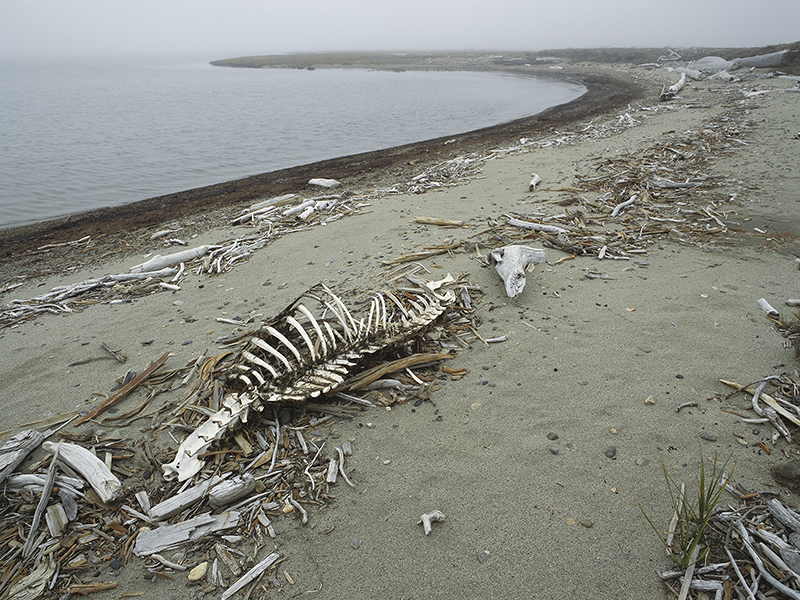
Caribou Skeleton | Oil and the Caribou | 2006 | 59 in. x 74 in.
August 2006, Barter Island, Arctic National Wildlife Refuge, along the Beaufort Sea coast, Alaska. Nearly a thousand caribou from the Teshekpuk Lake herd came over to the Arctic National Wildlife Refuge, making a two hundred and forty miles journey during the winter of 2006. Robert Thompson, an Iñupiaq conservationist who lives in Barter Island and accompanied me to the site speculated that perhaps the tundra in the Teshekpuk Lake wetland froze and the caribou came over looking for food. The tundra in Barter Island also froze, resulting in death of several hundred caribou that winter. I photographed the skeleton of such an animal the following summer. In recent years, there have been instances of rain during autumn and winter months in the Arctic, when the temperatures normally remain well below zero. The rain, followed by freezing, is causing hard ice crust on the tundra, which affects many land animals by encapsulating their food in ice, severely limiting forage availability. Caribou/reindeer, musk ox, lemmings are all affected; dramatic population crashes resulting from ice crust have been reported in some areas, and the frequency of these freeze–thaw events appears to have increased over recent decades, a consequence of anthropogenic climate change.